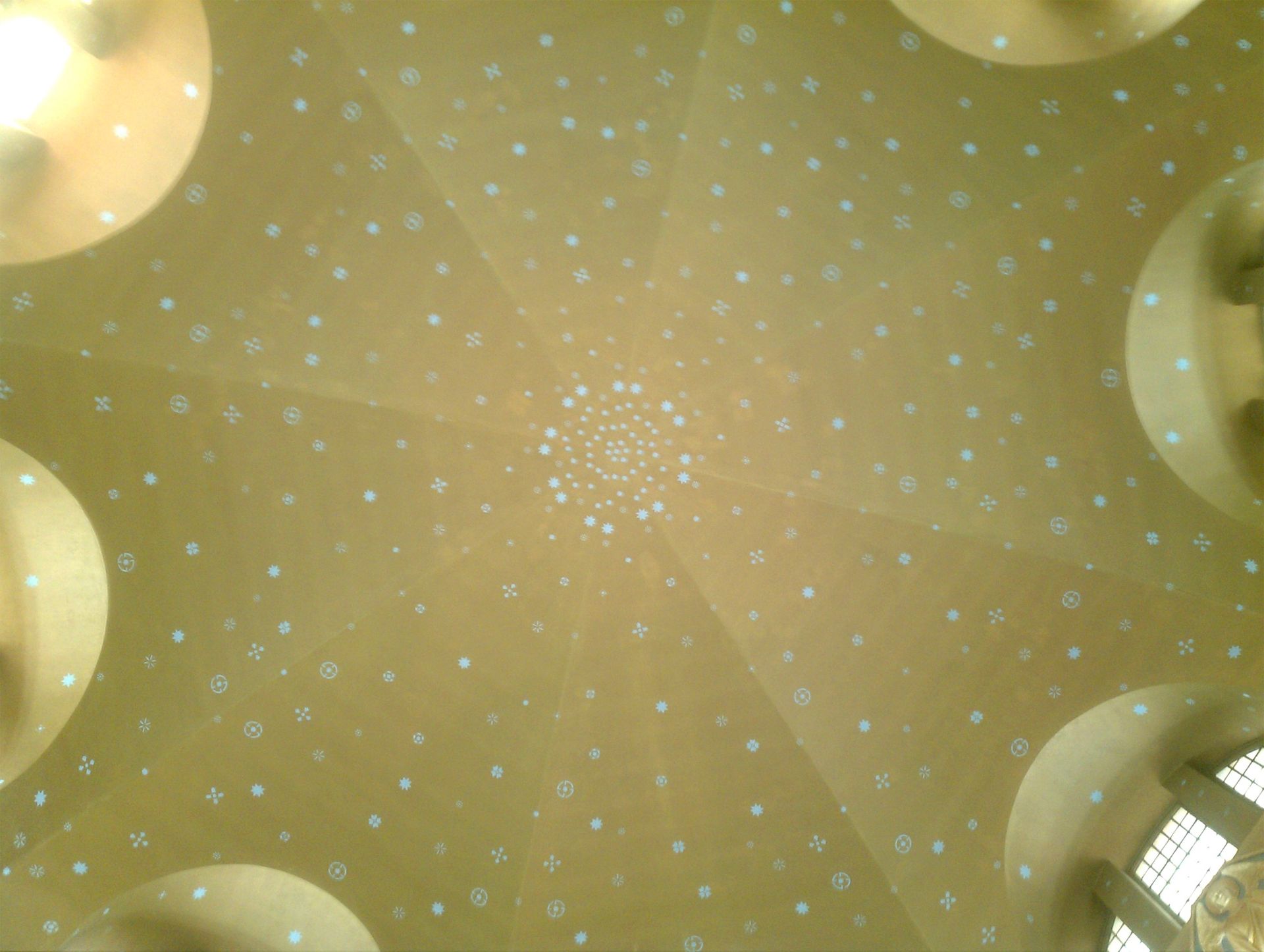Fire guts historic Toronto church, destroying its Group of Seven murals

A fire at the historic St Anne’s Anglican Church in Toronto on Sunday (9 June) damaged the Canadian heritage site and destroyed its unique religious murals by members of Canada’s renowned Group of Seven.
The 1908 Byzantine revival style church, declared a National Historic Site of Canada and given heritage status by the city of Toronto in 1996, contained more than 15 works by J.E.H. MacDonald, Frank Carmichael, Frederick H. Varley and other members of the Group of Seven depicting scenes from the life of Jesus. It was the only church to feature their work.
The rare religious works by members of a group known for its images of nature did not survive Sunday morning’s four-alarm fire, which destroyed everything but the building’s façade. There were no reports of injuries during the fire, but the church’s central dome collapsed and its interior was gutted. Police are still trying to determine the cause of the inferno.
At a press conference on Monday Alejandra Bravo, a city councillor for the Davenport ward where the church is located, told reporters that the works are “something we cannot replace in Canada and in the world”.
The works were commissioned in 1923 by the reverend Canon Reverend Lawrence Skey and the project was led by Macdonald, one of the Group of Seven’s founding members. He brought in his fellow Group of Seven members Varley and Carmichael,as well as Arthur N. Martin, S. Treviranus, H.S. Palmer, H.S. Stansfield, Neil McKechnie and Thoreau MacDonald (J.E.H.’s son). The result was more than a dozen murals and large paintings as well as medallions and reliefs of the four apostles by sculptors Frances Loring and Florence Wyle.
According to Parks Canada, the paintings comprised 11 narrative scenes, four large images on the pendentives beneath the church’s central dome and seven smaller images which run in a horizontal band around the upper wall of the chancel. The decorative works—inspired by the Arts and Crafts movement and a renewed late-19th-century interest in murals—covered the walls and ceiling of the apse, the main arches, the pendentives and the central dome of the church.
Combining narrative scenes, written texts and decorative plasterwork and detailing, MacDonald took inspiration from the colours, artistic conventions and motifs of Byzantine iconography, all the while adapting them to a contemporary Canadian context and the building’s ornate architectural style. One of the highlights was Varley’s Nativity, in a rich palette of coral pink, gold, cream and byzantine blue, which featured a self-portrait of the artist as a handsome young shepherd. Its destruction in the fire has been mourned throughout the Canadian art and heritage communities—including by the artist’s great-granddaughter, Emma Varley, who posted on X (formerly Twitter): “Such a loss.”
J.E.H. MacDonald’s contributions included the Crucifixion, featuring a skull at the base of the painting, a reference to Golgotha, and The Stilling of the Storm, featuring a dynamic Jesus almost leaping out of waves. The Ascension, by H.S. Stansfield, depicted Christ floating above snow-capped mountain peaks. J.E.H. MacDonald’s son Thoreau contributed The Raising of Lazarus, with its stylised sun and palm tree, and Jesus cloaked in red. The unorthodox, idiosyncratic nature of the works reflected the unconventional style of the architecture and the radical departure from tradition exemplified by Skey.

The ornate, Byzantine-style ceiling of St Anne’s Anglican Church, which collapsed in the 9 June fire Photo by Anne F Jackson, via Wikimedia Commons
“St Anne’s was a gloriously renegade building,” Peter Coffman, an associate professor of the history and theory of architecture at Carleton University in Ottawa, wrote in a mournful eulogy for the building. “It was beautiful, yes—exceptionally so. But it was also a rebel. It was Byzantine when Anglican churches were supposed to be Gothic. It was decorated by artists with no experience in liturgical art. It put the ‘Protest’ back into ‘Protestant’.”
While at the time of its inception it was described by local critics as both a “mosque” (loosely inspired by the Hagia Sophia) and a “synagogue”, Coffman contends, “it was just Skey being a contrarian—brandishing his Low-Church credentials and ridding himself of the trappings and traditions of the whole Anglo-Catholic movement in one blow.”
The building’s art and architecture were designed of a piece, in keeping with the Arts and Crafts style. “The paintings were not hung at the church. They were part of the structure. They helped hold that place up,” John Degen, a novelist and the chief executive of the Writers’ Union of Canada, wrote in an op-ed for the Toronto Star.
According to a letter to the community published by Reverend Don Byers, a reconstruction campaign is underway, with donations accepted via Canada Helps. “We will rise from the ashes stronger and even more committed to our mission to be a church for all people,” Byers wrote. “Yesterday’s fire was not the end of the story, but rather the beginning of a new chapter.”
Source link





